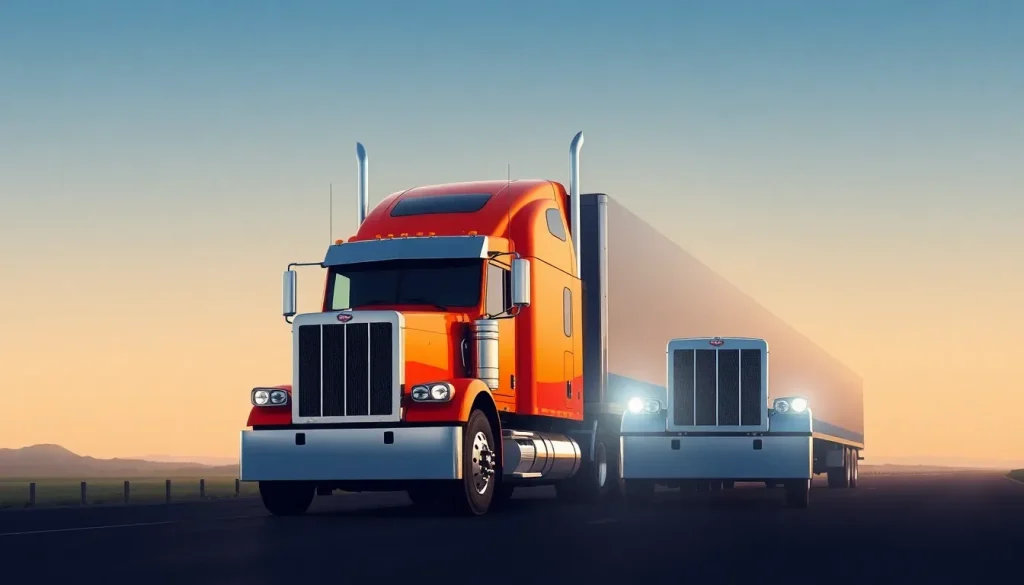Nuclear verdicts on trucking companies impact the economy, report shows

The trucking industry is facing significant challenges as soaring legal judgments, often referred to as "nuclear verdicts," threaten its viability. These verdicts not only affect individual companies but also ripple through the broader economy, resulting in detrimental consequences that can stifle growth and innovation in this critical sector.
Understanding the implications of these legal trends is crucial for stakeholders across the industry. The latest findings shed light on the urgent need for reform and the potential benefits of addressing these escalating tort costs.
- Understanding the impact of nuclear verdicts on trucking
- Long-term economic implications of tort costs
- Current challenges within the trucking sector
- Growth of tort costs in commercial transportation
- Regional variations in tort costs and their economic impacts
- Calls for tort reform in the trucking industry
- Strategies for addressing legal challenges
- Further insights into the issue of nuclear verdicts
Understanding the impact of nuclear verdicts on trucking
Nuclear verdicts are legal judgments exceeding $10 million, primarily arising from accidents involving commercial vehicles. A recent report by the Institute for Legal Reform and the Brattle Group highlights the staggering implications of these verdicts on the industry and the U.S. economy.
According to the report, every $1 million increase in tort costs correlates with approximately a $2 million decrease in U.S. gross domestic product (GDP). This relationship illustrates how escalating legal expenses can hinder economic activity.
Long-term economic implications of tort costs
The economic ramifications of high tort costs are profound. If these costs were to be effectively reduced, the potential benefits over a decade could include:
- An annual GDP increase of approximately $52.3 billion due to diminished litigation costs and enhanced economic engagement.
- The creation of 5.7 million jobs across various sectors as businesses expand without the burden of exorbitant legal costs.
- A reduction in food inflation by up to 15%, particularly impactful given that food is one of the most transport-intensive commodities.
These findings underscore the urgency for tort reform, which was a dominant topic at the recent American Trucking Associations’ Management Conference & Exhibition in San Diego. Here, industry leaders discussed the report's implications and the need for change.
Current challenges within the trucking sector
Oriana Senatore, senior vice president of strategy at the Institute for Legal Reform, noted that one in four highway accidents leading to nuclear verdicts involves a commercial transportation entity. This statistic highlights the vulnerability of trucking companies to legal actions that can threaten their operations.
The frequency and magnitude of these verdicts are escalating, with plaintiff attorneys increasingly opting for litigation rather than settlement discussions. This trend exacerbates the financial strain on trucking companies, as they face rising legal costs and the specter of significant financial judgments.
Growth of tort costs in commercial transportation
David McKnight from the Brattle Group emphasized that tort costs within the commercial transportation sector are growing at an alarming rate of about 10% annually. This growth extends beyond traditional trucking operations to include other commercial vehicles, such as delivery and service fleets.
This rapid increase in legal expenses is unsustainable for many companies, leading to a tightening of profit margins and, ultimately, higher costs for consumers.
Regional variations in tort costs and their economic impacts
The report also highlights significant regional disparities in tort costs, with states like North Dakota and Wisconsin exhibiting relatively low costs, which correlates with a lesser economic impact. In contrast, states such as Louisiana, Texas, and California face much higher tort costs, adversely affecting their economic landscapes.
| State | Tort Costs | Economic Impact |
|---|---|---|
| North Dakota | Low | Minimal |
| Wisconsin | Low | Minimal |
| Louisiana | High | Significant |
| Texas | High | Significant |
| California | High | Significant |
Calls for tort reform in the trucking industry
In the 2025 survey conducted by the American Transportation Research Institute (ATRI), lawsuit abuse reform ranked as the second most critical issue facing the trucking industry. This marks a significant shift in priorities, highlighting the pressing need for legislative changes to protect trucking companies from exorbitant legal costs.
A majority of survey participants advocated for state-level reforms to cap damages awarded to plaintiffs in cases involving trucks. For example, Iowa's 2023 legislation established a cap of $5 million on non-economic damages in trucking cases, signaling a potential model for other states to follow.
Strategies for addressing legal challenges
Industry stakeholders are also pushing for additional reforms to mitigate the impact of legal costs. Some frequently proposed strategies include:
- Eliminating "phantom" damages: Addressing inflated costs that complicate verdict calculations.
- Promoting transparency in third-party litigation funding: Ensuring that funding agreements used to support plaintiffs are disclosed to avoid inflated claims.
- Advocating for state-level reforms: Encouraging legislation that caps damages and offers more predictable outcomes in litigation.
States like Georgia, Kansas, and Oklahoma are leading the way by incorporating third-party funding transparency into their recently passed tort reform laws, setting a precedent for effective reform in other jurisdictions.
Further insights into the issue of nuclear verdicts
For a more in-depth exploration of how nuclear verdicts impact the trucking industry, you might find this video informative:
The trucking industry remains at a crossroads, with nuclear verdicts posing serious challenges that require immediate attention. Understanding the broader economic implications and advocating for necessary reforms can help secure a more stable future for this vital sector.




Leave a Reply